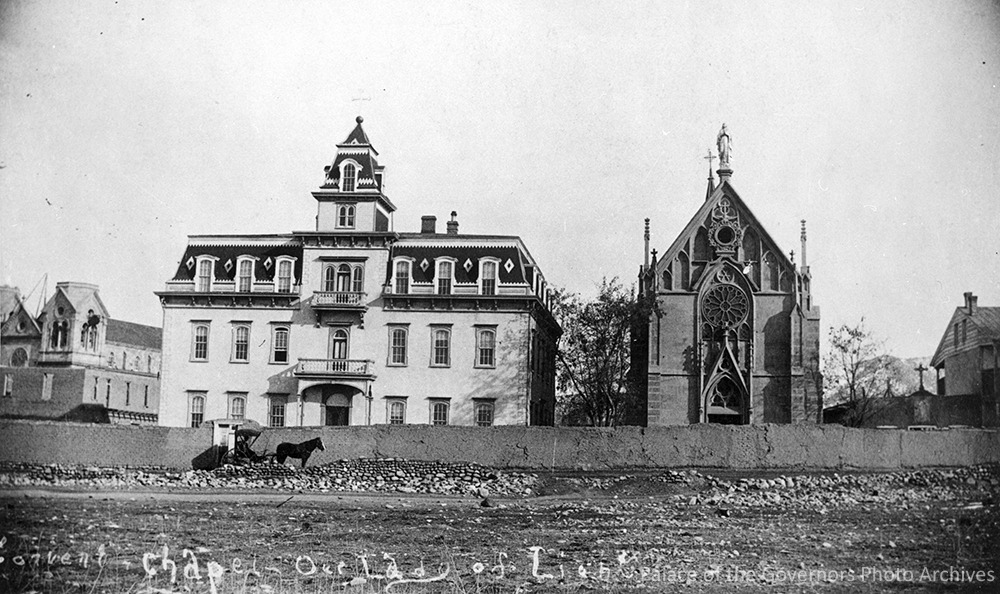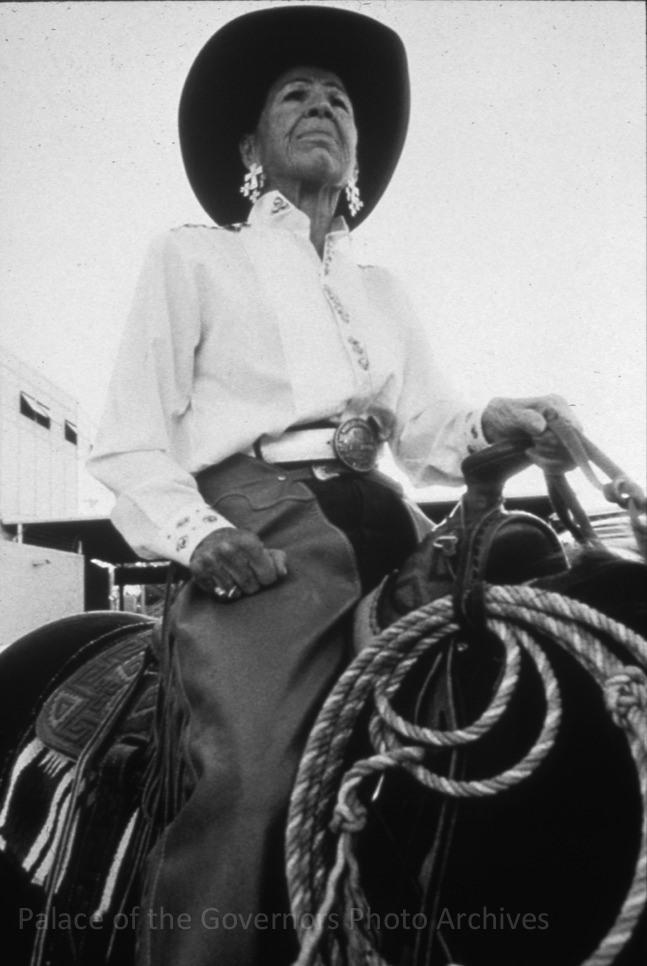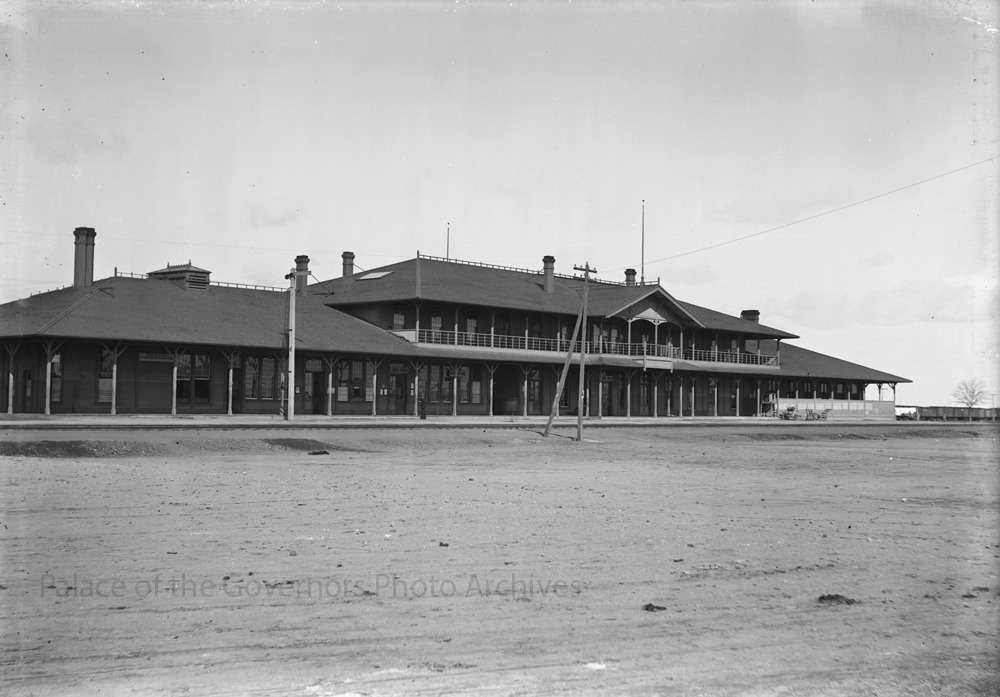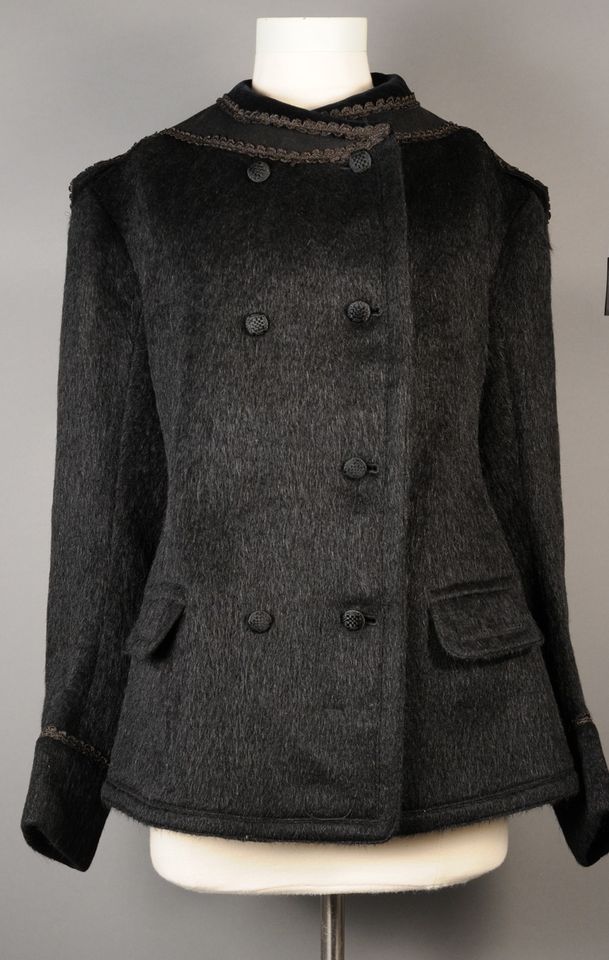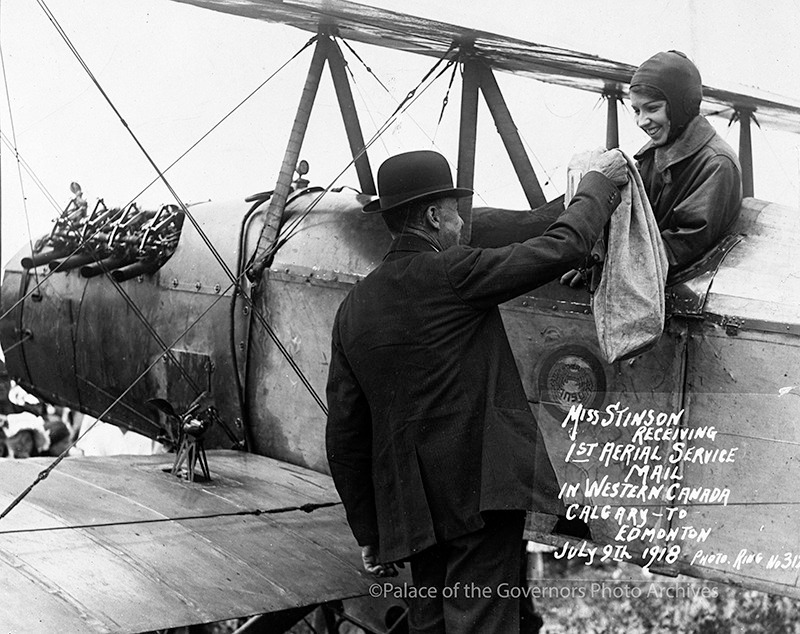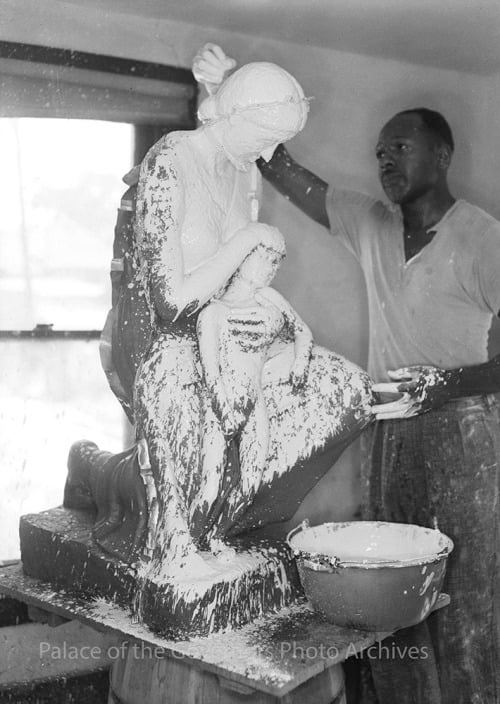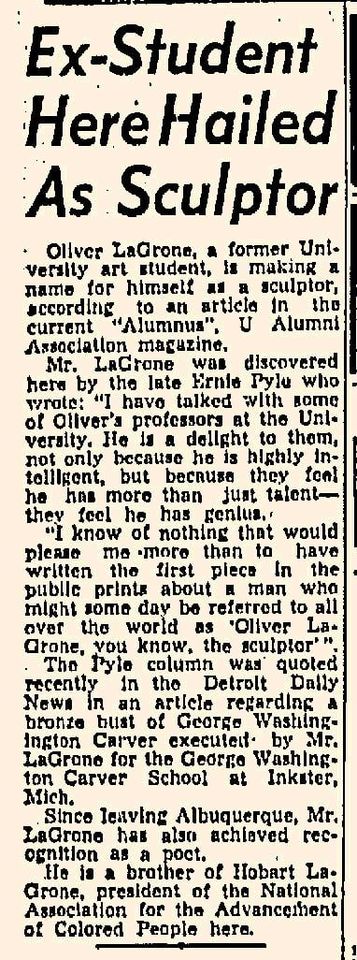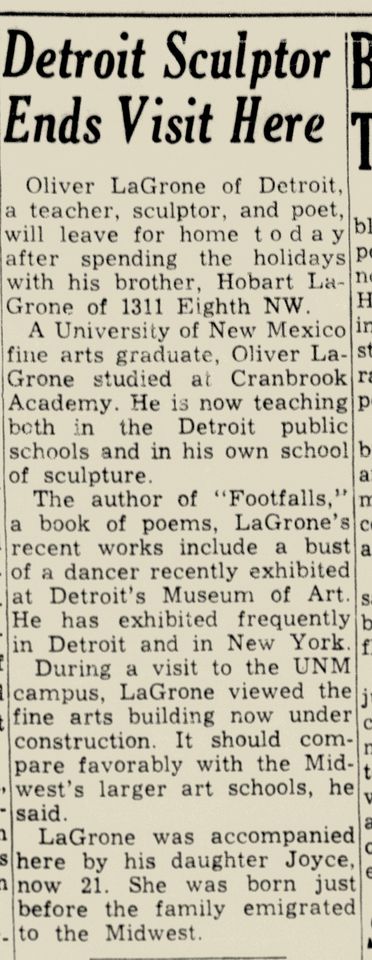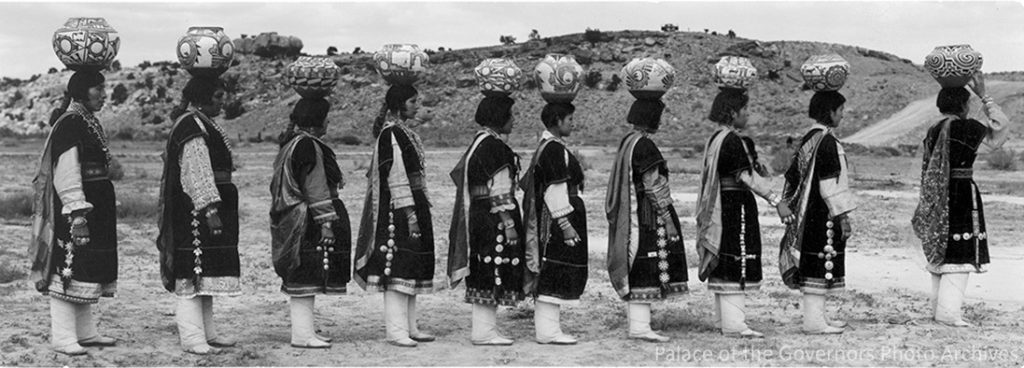
Zuni olla carriers performing Dance for War and Peace, New Mexico
Photographer: Wyatt Davis
Date: 1943
Negative Number 090735
The Zuni Olla Maidens are an all-women’s group renowned for their skill and ability to balance fragile water jars or ollas on their heads. Historically, Zuni women collected water in ollas from nearby springs for everyday use. Today, they perform in parades and community events, walking with water jars placed on their heads while singing their own compositions and those traditionally sung by Zuni men.
Roadside Marker Location: Pueblo of Zuni; McKinley County, US Hwy 53, Mile Marker 17
You can view a county by county list of the Historic Women Mile Markers in this pdf.
You can view a map of the Historic Women Mile Markers at www.nmhistoricwomen.org
March is Women’s History Month. During this month we’ll be highlighting some of the women featured on New Mexico’s Historic Women Roadside Markers. Text provided by our colleagues at New Mexico Historic Preservation Division

